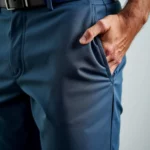Golf carts, those beloved vehicles gliding along lush fairways, present a unique driving experience. While golf enthusiasts enjoy the luxury of cruising from hole to hole, many might notice that these carts are predominantly left-hand drive. Have you ever wondered why this is the case? In this article, we will delve into the reasons behind the left-hand drive design of golf carts, exploring its history, practicality, and impact on players.
The Historical Perspective on Golf Carts
Golf carts didn’t always exist. Golf as a sport has a rich history, but the idea of using a cart to transport players and their clubs is relatively recent. It wasn’t until the 1950s that electric-powered golf carts began to emerge. Early models were primarily designed for convenience, allowing players to navigate golf courses without the fatigue of walking long distances.
The Standardization of Vehicle Design
As golf carts began to gain popularity, manufacturers found it necessary to standardize their designs to cater to a broad audience. One aspect of this design included the steering wheel’s location.
- North America and Left-Hand Drive: In the USA and Canada, most vehicles are designed as left-hand drive. This design places the driver’s seat on the left side of the vehicle, allowing a clearer view of oncoming traffic and a safer driving experience.
- Adaptation for Golf Carts: Golf cart manufacturers, primarily based in these regions, naturally adopted this design for their carts.
Global Influence
While many countries drive on the left, the dominance of the left-hand drive models in golf carts is primarily influenced by the widespread usage in North America. As golf has become a global sport, many countries have adopted the left-hand drive format, especially in resort-style courses where carts are primarily used.
 Early Golf Cart Models
Early Golf Cart Models
Practical Reasons for Left-Hand Drive Golf Carts
Understanding the practical reasons behind the left-hand drive design can further illuminate why this format is favored. Here’s a closer look:
Visibility and Control
- Better Sightlines: Since golf carts run predominantly on wide courses with minimal traffic, having the steering wheel on the left helps improve the driver’s line of sight. This orientation makes it easier to navigate tight spots and avoid obstacles, such as other players or water hazards.
- Pavement Markings: Most golf carts are designed for maneuverability both on the course and possibly within driving areas where they share roads with other vehicles. Left-hand drive aligns with the expected driving patterns in regions where these carts are prevalent.
Safety Considerations
Safety is paramount in any vehicle, including golf carts.
- Passenger Safety: A left-hand drive setup allows passengers to exit the cart safely on the side facing away from any potential oncoming traffic.
- Reduced Risk of Accidents: By adhering to left-hand drive designs, golf courses can minimize confusion for players who might also drive standard vehicles, thus reducing potential accidents on the course.
 Golf Cart on Course
Golf Cart on Course
Maintenance and Repair
Repair and maintenance are easier with left-hand drive designs because:
- Common Parts: Most components and parts are standardized due to their use in regular vehicles, which makes it easier and less costly to source repairs.
- Familiarity: Many mechanics and golf cart owners are already familiar with left-hand systems, allowing for quicker fixes and better service.
The Impact of Culture and Perception
Golf isn’t just a sport; it is a culture. This culture also influences perceptions about vehicle design and use on the golf course.
The Tradition of Golf
Golf has a long-standing tradition in countries like the USA where left-hand drive vehicles dominate.
- Player Experience: The feeling of familiarity created by left-hand drive carts enhances the overall experience, as players can intuitively navigate through the course as they would in a regular vehicle.
- Professional Influence: Professional tours often set standards that hobbyist courses tend to follow, leading to widespread adaptation of left-hand drive models across various types of golf venues.
Marketing Strategies
Golf cart manufacturers utilize the left-hand drive design as a marketing strategy.
- Appealing to Local Markets: Cart designs tailor to the majority of golf courses found in North America, solidifying their consumer base.
- Consistency: Having a common design helps build brand identity and loyalty among golf enthusiasts.
 Golf Tournament with Branded Carts
Golf Tournament with Branded Carts
Alternatives and Innovations
While left-hand drive is the standard, innovations are increasingly adapting golf cart designs to cater to various preferences and specifications.
Right-Hand Drive Options
Some manufacturers do offer right-hand drive golf carts, mostly for markets in regions where driving on the left is prevalent. Here’s who might consider these options:
- International Markets: Courses in the UK, Australia, and Japan may prefer right-hand drives for consistency with local driving laws.
- Customize for Needs: Some players might prefer right-hand drive if they often share vehicles or transport services based on their familiar driving side.
The Future of Golf Carts
As golf continues to evolve, potential electric and automated golf carts could offer new designs and layouts. Still, the left-hand drive preference isn’t likely to shift significantly in the near future.
Key Takeaways
- Historical Adoption: Golf carts became popular in the 1950s, primarily in North America, leading manufacturers to standardize the left-hand drive.
- Practical Advantages: Left-hand drive designs improve visibility, safety, and ease of maintenance.
- Cultural Influence: The tradition and marketing strategies tied to golf culture favor left-hand drive models.
- Future Innovations: Though left-hand drive is dominant, there are right-hand drive options and potential future trends to consider.
FAQ
1. Are all golf carts left-hand drive?
- Not all, but the vast majority produced, especially in North America, are left-hand drive.
2. Why do golf courses prefer left-hand drive carts?
- Safety and visibility are primary reasons, along with standardization in manufacturing.
3. Can you find right-hand drive golf carts?
- Yes, but they are less common and usually offered for specific countries where driving on the left is prevalent.
4. What are the maintenance benefits of left-hand drive golf carts?
- Easier sourcing of parts and familiarity of mechanics with the design lead to better maintenance options.
5. Will golf carts evolve in design?
- Yes, as technology advances, there may be innovations in golf cart design, but left-hand drive will likely remain standard.
 Modern Golf Cart Design
Modern Golf Cart Design
By understanding why golf carts are left-hand drive, we can appreciate the nuances of design and safety that contribute to enjoyable play on the course. Whether you are a seasoned pro or a casual player, this knowledge enhances the experience of golf and the usage of its specialized vehicles. Happy golfing!

